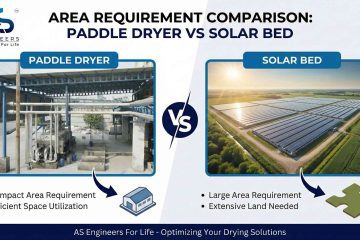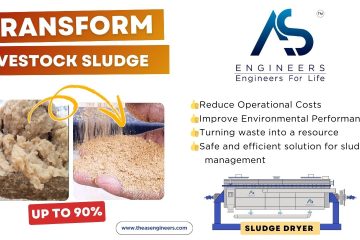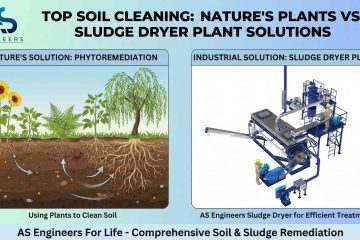Have you ever wondered if there’s a way to turn industrial wastewater into a source of renewable energy? The answer lies in the anaerobic sludge blanket, a powerhouse solution that both treats waste and produces biogas. This technology, also known as the Upflow Anaerobic Sludge Blanket (UASB) reactor, offers a promising pathway for waste management facilities, food-processing plants, and municipal treatment centers. Through its specialized microbial community, it converts organic matter in wastewater into valuable “sludge gas,” also referred to as biogas, which can be reused for heating or electricity. Read on to discover why this method is revolutionizing the future of sustainable waste treatment.
Table of contents
- Understanding the Anaerobic Sludge Blanket
- Why Biogas Is So Important
- Mechanisms of the Upflow Anaerobic Sludge Blanket
- Designing an Effective Anaerobic Sludge Blanket System
- Operational Guidelines and Best Practices
- Troubleshooting Common Issues
- Environmental and Economic Benefits
- Advanced Considerations: Scale-Up and Integration
- Real-World Case Insights
- Frequently Asked Questions (FAQ)
- Conclusion
- Further Reading and References
Understanding the Anaerobic Sludge Blanket
The Basics of UASB Reactors
Upflow Anaerobic Sludge Blanket (UASB) reactors stand at the forefront of modern wastewater treatment. They operate under anaerobic conditions—meaning no oxygen is present—to break down organic pollutants. Wastewater enters the reactor from the bottom and moves upward through a dense bed of granulated sludge. Microbes in these sludge granules digest the organic content, generating a mix of methane and carbon dioxide. This gas mixture is commonly called biogas or “sludge gas.”
Because the process relies on a biological community, the reactor’s performance depends on maintaining the right balance of microorganisms, temperature, and waste composition. The upward flow ensures continuous contact between microbes and the incoming wastewater, maximizing digestion. Over time, the microbial sludge forms specialized granules that remain suspended in the reactor, avoiding the need for external support structures.
Key Components in the Process
- Influent Distribution
The wastewater feed should be evenly distributed across the bottom of the UASB reactor. Good distribution prevents dead zones and ensures every drop of influent interacts with the microbial community. - Sludge Bed
The sludge bed is the heart of the reactor. It’s populated by diverse microorganisms—bacteria and archaea—that form granules. These microbes convert organic matter into “digested sludge,” which largely remains in the reactor. - Gas-Liquid-Solid Separator
Located above the sludge bed, this separator helps channel released biogas away from the liquid and solid components. It keeps the sludge bed intact and maintains the upward flow pattern. - Effluent Outlet
Treated water exits through an overflow or collection system at the top. This water still requires further polishing or disinfection before final discharge, depending on regulatory requirements. - Biogas Collection Dome
Biogas collects at the top of the reactor dome. Facilities often capture it for energy use, such as heating or electricity generation.
Because of this setup, UASB reactors generally occupy less space than aerobic systems and require less energy. The system’s efficiency has made it a favorite in regions seeking cost-effective, eco-friendly waste treatment solutions.
Why Biogas Is So Important
The Rising Demand for Renewable Energy
Global energy consumption keeps climbing, and conventional fossil fuels are finite and polluting. Biogas derived from an anaerobic sludge blanket provides a renewable alternative. Industries now see wastewater not as waste but as an energy resource. By adopting UASB reactors, facility managers transform organic waste into a consistent fuel source while reducing overall operating costs.
Biogas generally contains a high percentage of methane, typically 60-70%. Methane is the main energy component in natural gas, so its presence in sludge gas is highly valuable. Capturing and using this gas offsets the need for conventional fuels, easing the pressure on energy grids. In some operations, surplus biogas is even sold back to the grid, generating additional revenue.
Greenhouse Gas Reduction
Anaerobic digestion breaks down organic matter more efficiently than letting waste decompose in open lagoons or landfills, where uncollected methane leaks directly into the atmosphere. Methane is a potent greenhouse gas, with a global warming potential significantly greater than carbon dioxide over a 20-year span. By capturing sludge gas, UASB reactors reduce the environmental impact of wastewater disposal.
The captured gas can be burned to produce heat or electricity, converting methane into carbon dioxide and water vapor. While carbon dioxide still contributes to greenhouse effects, its impact is less severe than methane’s if released untreated. This conversion helps facilities lower their carbon footprint and potentially earn carbon credits in regions where emissions trading systems are in place.
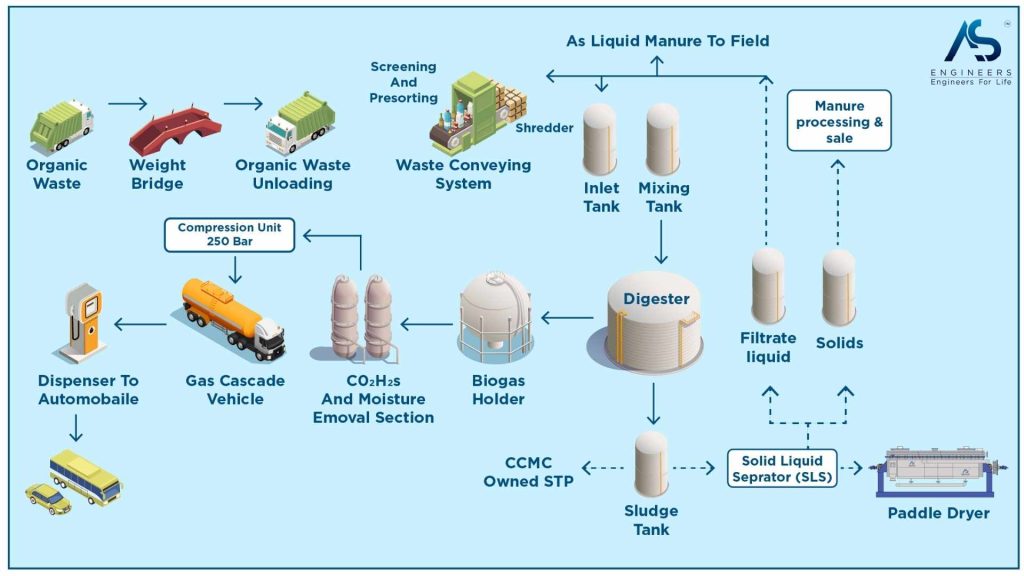
Mechanisms of the Upflow Anaerobic Sludge Blanket
Microbiology of the Sludge Blanket
Beneath the technology lies a fascinating biological ecosystem. Various microbial groups, each fulfilling a role, work synergistically to convert complex organic compounds into simpler molecules. The process generally involves:
- Hydrolysis
Large organic molecules in the wastewater—proteins, fats, carbohydrates—are broken down into smaller molecules like amino acids, fatty acids, and simple sugars. - Acidogenesis
Acidogenic bacteria further convert these molecules into volatile fatty acids (VFAs), alcohols, hydrogen, and carbon dioxide. - Acetogenesis
Acetogenic bacteria transform VFAs and alcohols into acetic acid, hydrogen, and carbon dioxide. These intermediates set the stage for methane formation. - Methanogenesis
Methanogenic archaea convert acetic acid and hydrogen into methane and carbon dioxide. Methane forms the energy-rich component of sludge gas.
Because UASB reactors operate without oxygen, it’s crucial to keep air out. Oxygen can disrupt the carefully balanced microbial community, killing off the anaerobes and undermining reactor performance. Sealed reactors and proper inlet distribution reduce the risk of oxygen ingress.
Sludge Granules: The Real MVPs
In many UASB reactors, the sludge develops into granules—compact clusters of microorganisms. These granules offer several advantages:
- High Biomass Retention
Granules stay suspended, so the reactor retains a large population of microbes even if the hydraulic flow rate fluctuates. - Optimized Mass Transfer
The layered structure of granules allows various microenvironments to exist in a single particle. Outer layers might perform acidogenesis, while inner layers handle methanogenesis. - High Settleability
Sludge granules typically have good settling properties. Even if the upward flow velocity increases, they rarely wash out of the reactor.
Granule formation might require careful start-up protocols and stable operating conditions. Sudden changes in pH, temperature, or influent composition can break down these granules, leading to performance drops.
Designing an Effective Anaerobic Sludge Blanket System
Reactor Sizing
Designing a UASB reactor starts with sizing calculations based on:
- Influent Flow Rate
The average and peak flows must fit the reactor volume so that microbes have enough time to digest organic matter. - Organic Loading Rate (OLR)
This represents the amount of organic matter fed to the reactor per unit volume per day (e.g., kg COD/m³/day). Exceeding recommended OLR can destabilize the microbial community. - Hydraulic Retention Time (HRT)
The time the wastewater remains in the reactor impacts performance. Short retention times could lower treatment efficiency, while overly long times might waste capacity.
Engineers often start with pilot-scale reactors to fine-tune these parameters. The final design will also depend on local regulations, the type of wastewater (food industry, municipal, pulp and paper, etc.), and budget constraints.
Feed Composition and Pre-Treatment
Contaminants such as heavy metals, disinfectants, or pesticides can inhibit the microbial population. Large solids like plastic or fibrous materials may clog the reactor. Many facilities perform simple pre-treatment steps:
- Screening
Removes large debris. - Grit Removal
Keeps inorganic solids (sand, silt) from accumulating in the reactor. - Equalization
Balances flow and pollutant loads, preventing sudden shock loads.
Some industrial waste streams also need pH correction to maintain a neutral range (6.5–7.5) where most anaerobic microbes thrive. The anaerobic sludge blanket can perform more consistently by fine-tuning the influent to an optimal state.
Loading Rates and Velocity
Upflow velocity is a crucial design consideration. It has to be high enough to lift wastewater through the sludge bed but not so high that it washes out granules. Depending on the wastewater characteristics, typical upflow velocities range from 0.5 to 1 meter per hour.
Organic loading rate (OLR) must match microbial capacity. Early in the reactor’s life, keep the OLR low to allow granule formation. Operators can increase OLR gradually as the microbial community matures. This ramp-up period might last several weeks to a few months, depending on temperature and nutrient composition.
Temperature Control
Most UASB reactors operate in the mesophilic range (around 35°C). If ambient conditions fall significantly below this temperature, you may need heating systems to maintain optimal microbial activity. Thermophilic conditions (50–60°C) can yield higher reaction rates but demand more energy for heating and stricter process control.
Consistent temperature control is crucial. Fluctuations can disrupt microbial balance, reducing biogas production and causing partial digestion. Insulation, heat exchangers, and recirculation loops help stabilize temperatures, especially in colder climates.
Operational Guidelines and Best Practices
Start-Up Phase
The start-up phase sets the foundation for long-term performance. Operators usually follow these steps:
- Seeding with Active Sludge
Introduce well-digested sludge from existing anaerobic reactors to hasten granule formation. This “seed” provides a rich microbial population ready to colonize the new reactor. - Gradual Loading
Begin with a low organic loading rate and gradually increase. This approach lets microbes adapt to the new environment without overloading them. - Regular Monitoring
Track pH, alkalinity, volatile fatty acids (VFA), and biogas production. Sudden deviations in these parameters often signal operational issues. - Maintain Temperature and pH
Keep temperature in the desired range and adjust pH if it drifts outside 6.5–7.5. Alkalinity supplements (like sodium bicarbonate) can help buffer the system against acid spikes.
Patience is key here. Rushing the start-up usually leads to incomplete digestion and potential reactor failure. Once the microbial community stabilizes and granule formation begins, you can progressively push the loading rate closer to the design capacity.
Monitoring pH and Alkalinity
Acid spikes occur when the acid-producing microbes outpace the methanogens. Elevated levels of volatile fatty acids can drop the pH, inhibiting methanogens that require a stable pH near neutrality.
You can track:
- pH
Keep it between 6.5 and 7.5. - Total Alkalinity
This measures the buffer capacity. A well-buffered reactor can withstand fluctuations in acid load. - VFA Concentrations
High VFAs indicate imbalance. Methanogens might not be keeping up with the acid-producing bacteria.
If you see an acidification trend, reduce the organic loading rate and consider adding alkalinity. Ensure that any external chemicals, like flocculants or disinfectants, do not harm the microbial community.
Handling Digested Sludge
A well-maintained UASB reactor generates “digested sludge” that is far more stable than raw sludge from aerobic systems. Over time, the sludge blanket thickens. While the reactor retains most of the sludge, periodic removal may be necessary, especially if inert materials accumulate.
When removing sludge, do it gradually to avoid losing too much microbial mass at once. Some facilities dewater the removed sludge for further processing or disposal. If conditions permit, the “digested sludge” can serve as a soil amendment or fertilizer after proper treatment, thanks to its nutrient content and reduced pathogen levels.

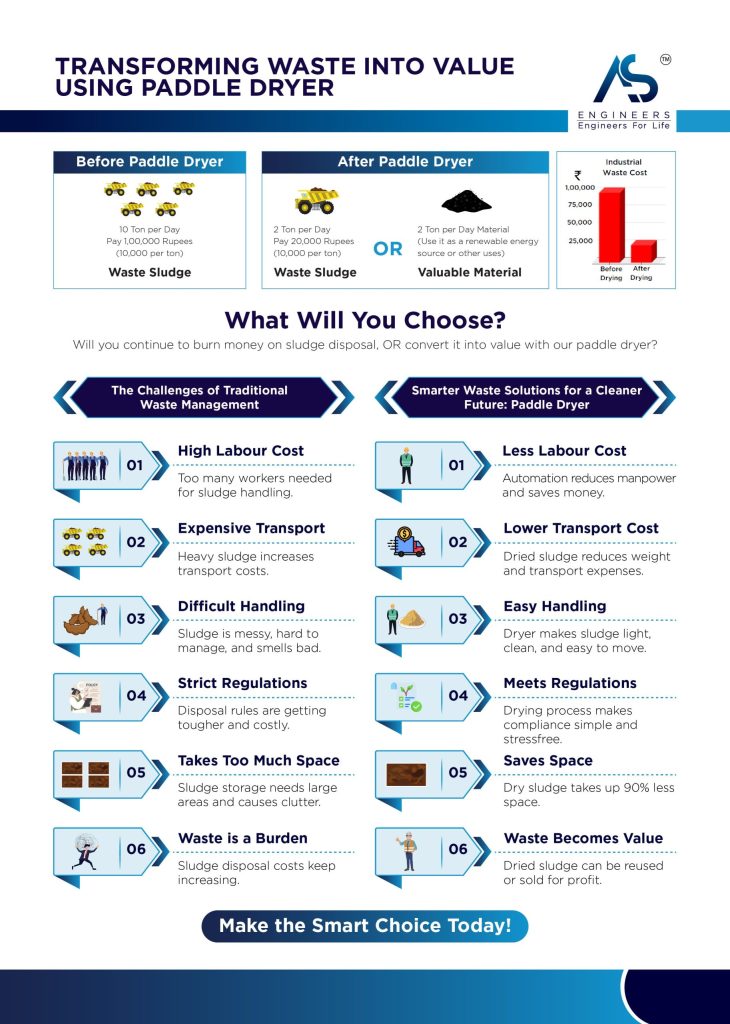
Troubleshooting Common Issues
Foam Formation
Foam can develop when certain surfactants or organics in the wastewater interact with biogas bubbles. Elevated filamentous bacteria can also trap gas in thick foam layers, potentially interfering with gas collection and effluent quality.
Possible Solutions
- Adjust the organic loading rate to minimize foam-producing compounds.
- Consider installing mechanical foam breakers or adding defoaming agents if permitted.
- Evaluate feed characteristics to reduce surfactants that promote foam.
Toxic Substances
Compounds like heavy metals, solvents, or disinfectants can kill or inhibit the microbial population. If the reactor experiences a sudden drop in biogas production or pH changes, suspect toxic inhibition.
Mitigation
- Implement pre-treatment steps to remove or neutralize toxins.
- Dilute the influent with fresh water or other benign waste streams.
- Re-seed the reactor if the microbial community suffers permanent damage.
Low Biogas Yield
A decline in sludge gas production can stem from multiple issues: insufficient organic loading, temperature fluctuation, excessive washout of microbes, or an imbalanced microbial community.
Checkpoints
- Confirm the feed has adequate biodegradable content.
- Verify reactor temperature remains stable.
- Ensure pH is within the optimal range.
- Inspect sludge granule integrity; if they’re disintegrating, reduce mixing or upflow velocity until granules re-form.
Addressing these issues promptly prevents prolonged downtime and financial losses, especially if your facility relies on biogas for on-site energy generation.
Environmental and Economic Benefits
Energy Cost Savings
Capturing and utilizing biogas from an anaerobic sludge blanket can significantly offset energy costs. Facilities with boilers, dryers, or generators can tap into this renewable gas to reduce their reliance on external power supplies. In many regions, utilities offer incentives or rebates for renewable energy projects, accelerating the payback period.
Carbon Footprint Reduction
When organic waste decomposes in an open environment, methane escapes directly into the atmosphere. A UASB reactor effectively harnesses that methane, converting it into a usable fuel and drastically cutting greenhouse gas emissions. By channeling biogas into electricity or heat, facilities can reduce their indirect emissions as well. This dual mechanism—preventing methane leaks and displacing fossil fuels—dramatically lessens a plant’s carbon footprint.
Nutrient Recovery
Anaerobic digestion partially stabilizes nutrients like nitrogen and phosphorus. The resulting “digested sludge,” if processed further, can be applied to land as a fertilizer or soil conditioner. This recycles valuable nutrients that would otherwise go to waste. The process reduces chemical fertilizer demand and lessens the potential for nutrient pollution in water bodies when handled correctly.
Advanced Considerations: Scale-Up and Integration
Integrating with Other Treatment Methods
UASB reactors often serve as a primary or intermediate step. In municipal systems, you can follow up with aerobic polishing processes to remove residual organic matter or nutrients. In industrial setups, a UASB reactor might link to membrane filtration or advanced oxidation processes, meeting strict regulatory discharge limits.
Hybrid Solutions
- Anaerobic-Aerobic Systems
These integrated systems benefit from anaerobic digestion for primary organic reduction and biogas generation, followed by aerobic finishing to remove ammonia or other leftover contaminants. - Sequential Batch Reactors (SBR)
After anaerobic digestion, an SBR can tackle fine-tuning tasks like nitrification and denitrification, ensuring the final effluent meets discharge standards.
Heat Recovery and Cogeneration
Biogas can fuel combined heat and power (CHP) systems that simultaneously produce electricity and usable heat. Facilities can direct electricity to their operations and use waste heat to warm the reactor, creating a self-sustaining loop. This synergy lowers overall energy costs and can even generate surplus power to sell back to the grid where net metering policies exist.
Pilot Studies
For large-scale industrial applications, conducting a pilot study can prevent costly design mistakes. Pilot reactors help confirm:
- Optimal Hydraulic Retention Time
- Maximum Organic Loading
- Nutrient Requirements
- Tolerance to Fluctuations (pH, toxins)
Successful pilot data can guide the scaling of reactor volume and design parameters, reducing the risk of underperformance or reactor failure.
Real-World Case Insights
Food Processing Industry
Food-processing plants often discharge wastewater high in organic content. One example involves a dairy facility that installed a UASB reactor to treat lactose-rich wastewater. Through granular sludge formation, the reactor transformed the inflow into digested sludge and biogas. The biogas powered the plant’s boilers, cutting natural gas bills by nearly 30%. Furthermore, the stabilized effluent required fewer chemical additives in subsequent treatment steps.
Municipal Treatment Facilities
Some cities have adopted UASB reactors as a first step for high-strength waste streams or specific sections of municipal wastewater. These installations reduce the load on secondary and tertiary treatment processes. By generating sludge gas, the city offsets some of its operational energy costs. Residents benefit from lower utility fees, and the municipality reduces its overall environmental impact.
Pulp and Paper Mills
Pulp and paper effluents contain readily biodegradable fibers and organic compounds. UASB technology handles these efficiently if pre-screening removes large fibers. Mills see a decrease in electricity costs by harnessing the biogas in their production lines. Maintenance staff also report fewer odor issues compared to older lagoon-based treatment methods.
Frequently Asked Questions (FAQ)
1. How does an anaerobic sludge blanket differ from conventional aerobic treatment?
An anaerobic sludge blanket operates without oxygen, relying on specialized microbes that convert organic matter into methane. In contrast, aerobic systems require oxygen and produce more biomass that often requires additional treatment. Anaerobic systems also save energy by generating sludge gas, whereas aerobic systems typically consume energy for aeration.
2. Can I retrofit an existing aerobic treatment system into a UASB reactor?
Yes, but it requires substantial modifications. You need to seal the system to exclude oxygen, add a gas collection mechanism, and possibly install a gas-liquid-solid separator. It’s often more economical to build a dedicated UASB reactor or a hybrid system that integrates both anaerobic and aerobic stages.
3. Is the digested sludge from a UASB reactor safe for agricultural use?
It can be, provided you follow local regulations and conduct proper testing. Digested sludge has fewer pathogens and odors than raw sludge. However, you should analyze it for heavy metals, persistent chemicals, and other contaminants. If it meets the standards, it can serve as a valuable soil amendment.
4. What if the wastewater has a high fat, oil, and grease content?
High FOG content can slow digestion and cause floating scum layers. Pre-treatment steps like dissolved air flotation or oil skimming help reduce these issues. Once in the reactor, the microbial community can adapt to digest some fats, but excessive amounts may clog the system or limit performance.
5. How long does a UASB reactor last?
With proper maintenance and monitoring, a UASB reactor can function effectively for decades. Key to longevity is preventing toxicity events, maintaining stable operating conditions, and periodically removing inert sludge buildup. Most failures stem from poor management rather than reactor design limitations.
Conclusion
The anaerobic sludge blanket shines as a robust technology that treats wastewater while producing a valuable energy source in the form of sludge gas. Its ability to transform organic pollutants into methane reduces energy expenses, cuts greenhouse gas emissions, and eases the burden on downstream treatment processes. Designing, operating, and troubleshooting a UASB reactor demands a strong grasp of microbial dynamics, hydraulic principles, and careful monitoring of system parameters like pH, temperature, and loading rates. When managed well, this approach brings tremendous environmental and economic advantages. Whether you run a municipal treatment plant or a specialized industrial facility, adopting this technology can lead to a more efficient, eco-friendly, and cost-effective operation. Ready to explore anaerobic sludge blanket systems for your needs? Share your thoughts below or subscribe for more insights on wastewater treatment and renewable energy strategies.
Further Reading and References
- United States Environmental Protection Agency (EPA): www.epa.gov
- Water Environment Federation: www.wef.org
- Dutch Knowledge Centre on Water (STOWA) Publications: www.stowa.nl
- Food and Agriculture Organization of the United Nations: www.fao.org
- European Commission on Environment: environment.ec.europa.eu


